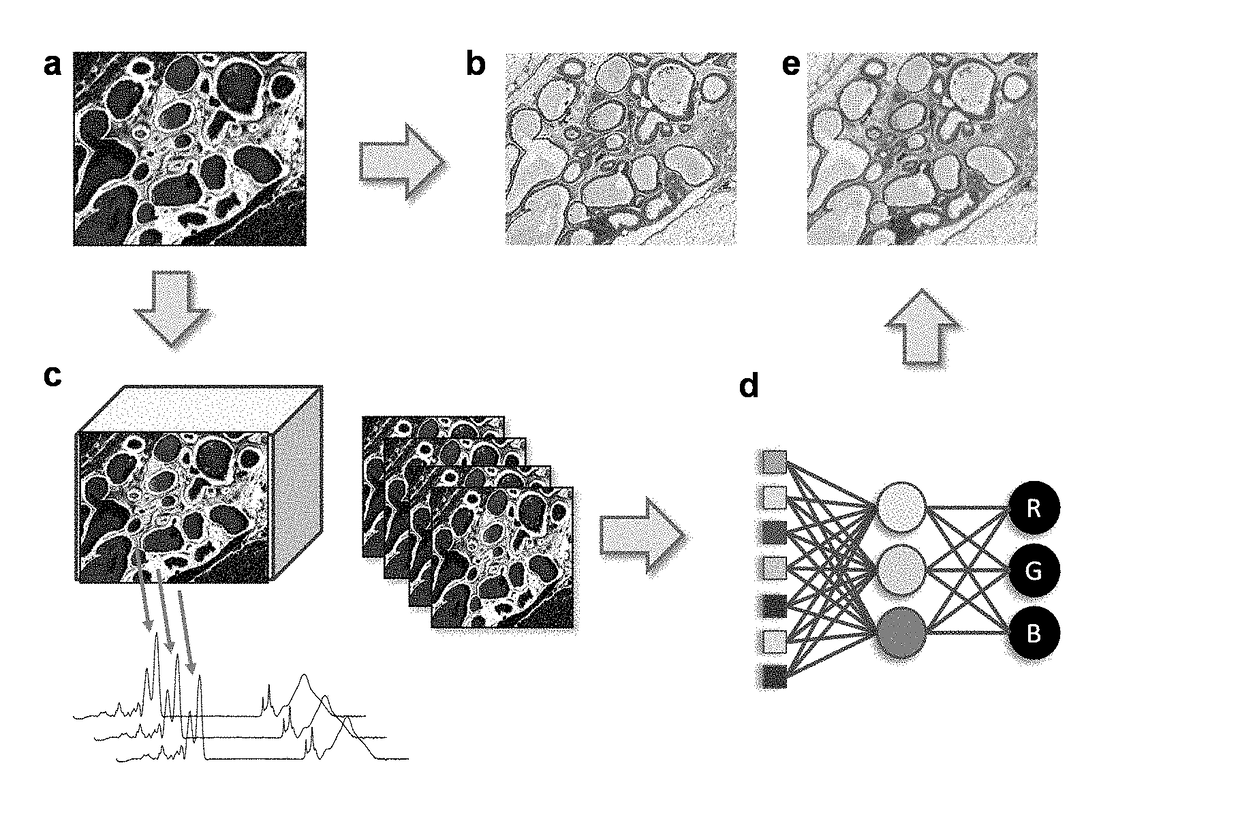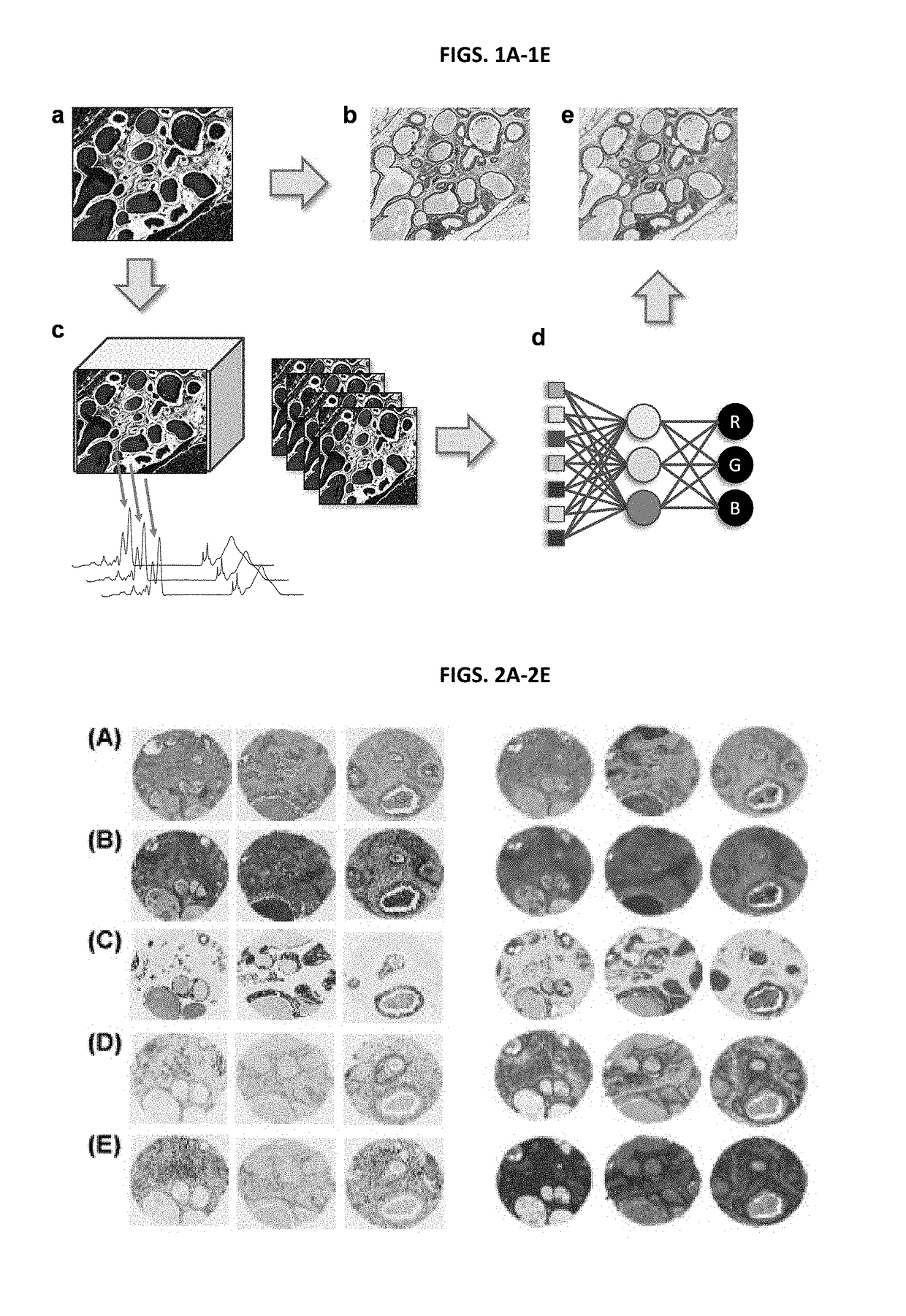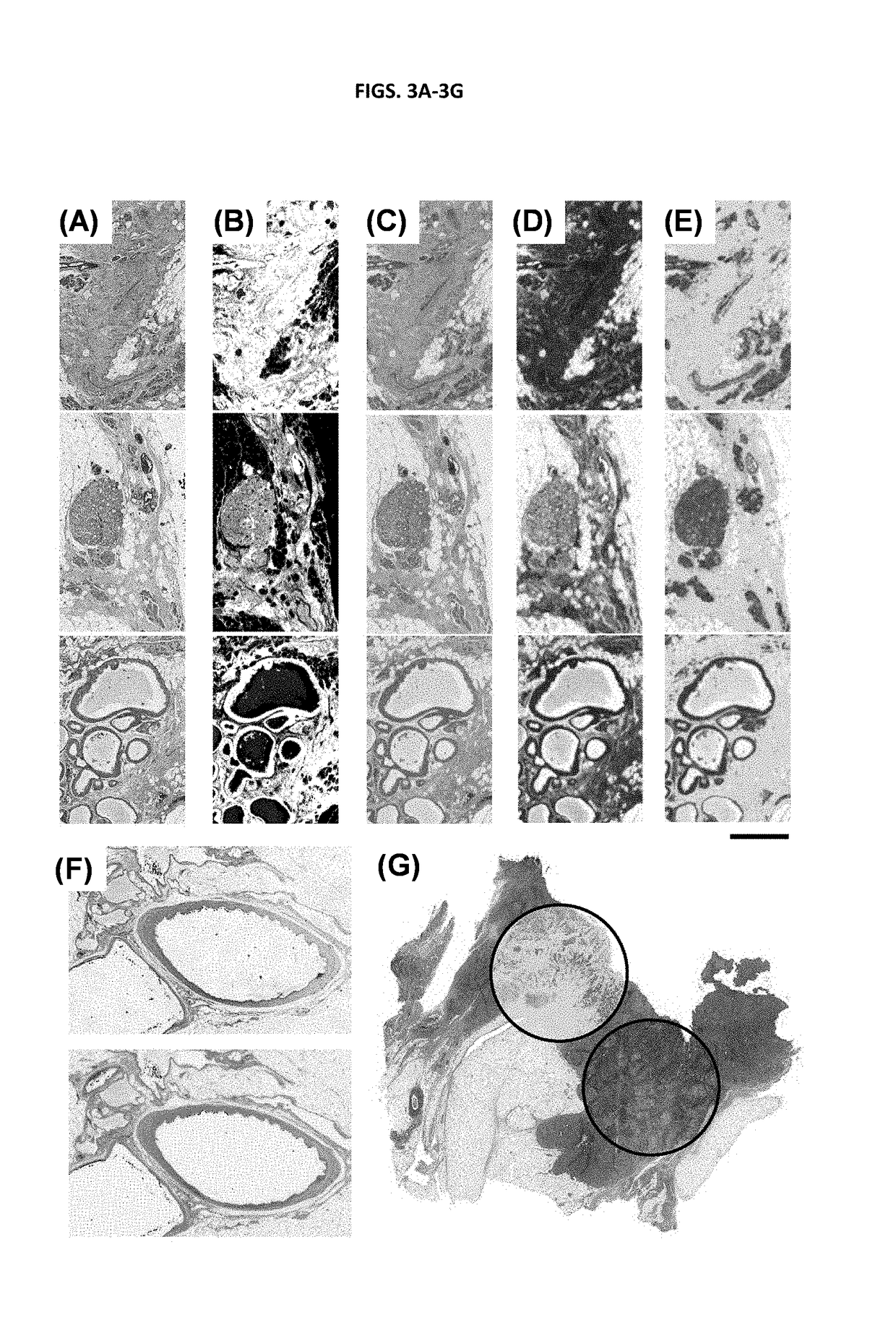Stain-free histopathology by chemical imaging
- Summary
- Abstract
- Description
- Claims
- Application Information
AI Technical Summary
Benefits of technology
Problems solved by technology
Method used
Image
Examples
example 1
Materials and Methods
[0118]This example provides the materials and methods used in Examples 2-4 below. Although the examples describe studies using breast tissue, one skilled in the art will appreciate that other tissues and samples can be used based on the teachings provided herein.
[0119]The problem of spectral unmixing in breast tissue was solved herein by mapping the infrared images to bright-field images representing an array of common histological stains. Several tissue samples representing a broad panel of normal tissue, non-malignant and cancer subtypes, including tissue microarrays and surgical resections of breast biopsies, were used. A training set was constructed by first imaging the tissue using mid-infrared spectroscopy. Adjacent sections were then stained using a panel of standard and immunohistochemical stains and imaged using bright-field microscopy. The bright-field images were then adjusted to overlay the spectroscopic images. This created a spatial (pixel-to-pixel...
example 2
Comparison of H&E Stained Image to Computed Stain Image
[0136]Breast tissue previously fixed and paraffin embedded, was stained with H&E, and imaged using microscopy before and after staining with H&E. As shown in FIG. 1A, brightfield optical image of tissue has little contrast. Conventionally, the use of H&E stain allows a visualization of tissue morphology using optical microscopy (FIG. 1B).
[0137]The same unstained tissue shown in FIG. 1A was subjected to IR spectroscopic imaging in the form of two spatial dimensions and a spectral dimension (FIG. 1C). The spectrum at every pixel contains specific features that are indicative of the molecular content of the sample as well as its optical properties (Davis et al., Anal. Chem. 82:3474-86, 2010).
[0138]The size of the data is then reduced from either knowledge of biochemical absorption or a statistically-based dimensionality reduction approaches. This produces a data set containing a significantly smaller number of spectral features tha...
example 3
Comparison of Tissue-Specific Stained Images to Computed Stain Images
[0141]H&E stains are fairly non-specific in terms of the functional or molecular content of the tissue. Visualizing molecular content is significantly more expensive, time-consuming and difficult; yet, this is precisely the origin of the contrast mechanism in chemical imaging. Hence, additional stains were examined that are indicative of tissue function and integrity. Immunohistochemical (IHC) stains for cell types are often used in diagnostic imaging or for specific research purposes, for example, high molecular weight (HMW) cytokeratin (epithelial-type cells), vimentin (fibroblast-like cells), smooth muscle alpha actin (myo-like cells), P63 (myoepithelial cells), CD31 (endothelial cells) and Masson's Trichrome stain (collagen and keratin fibers), are commonly employed.
[0142]A comparison of the physically stained and computationally stained images is shown in FIGS. 2A-2E. Since the process is correlative, during t...
PUM
 Login to View More
Login to View More Abstract
Description
Claims
Application Information
 Login to View More
Login to View More - R&D
- Intellectual Property
- Life Sciences
- Materials
- Tech Scout
- Unparalleled Data Quality
- Higher Quality Content
- 60% Fewer Hallucinations
Browse by: Latest US Patents, China's latest patents, Technical Efficacy Thesaurus, Application Domain, Technology Topic, Popular Technical Reports.
© 2025 PatSnap. All rights reserved.Legal|Privacy policy|Modern Slavery Act Transparency Statement|Sitemap|About US| Contact US: help@patsnap.com



